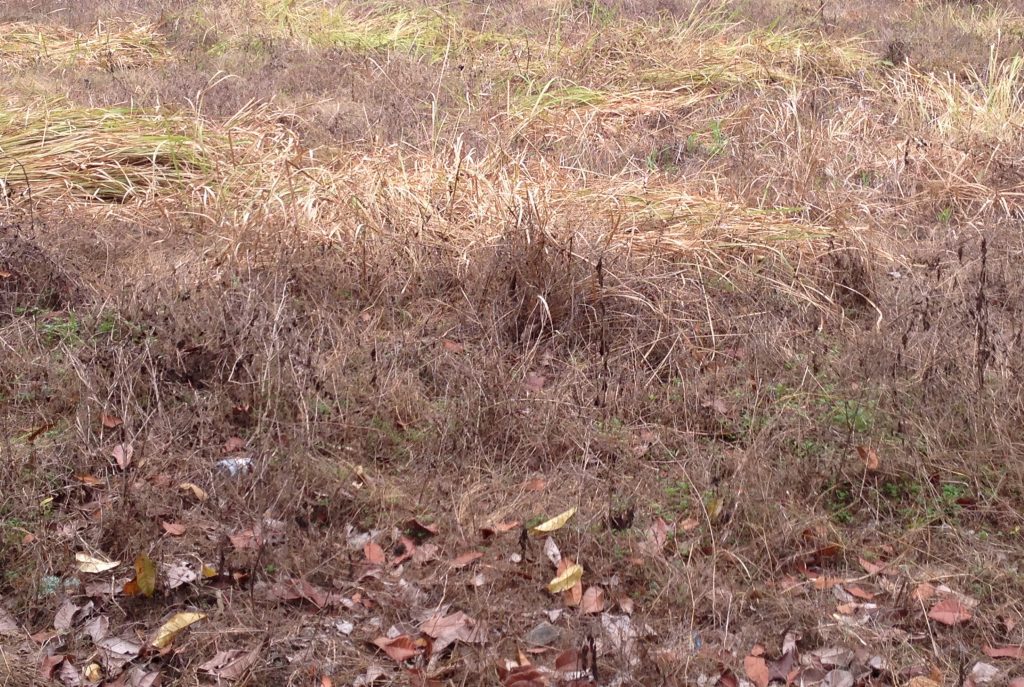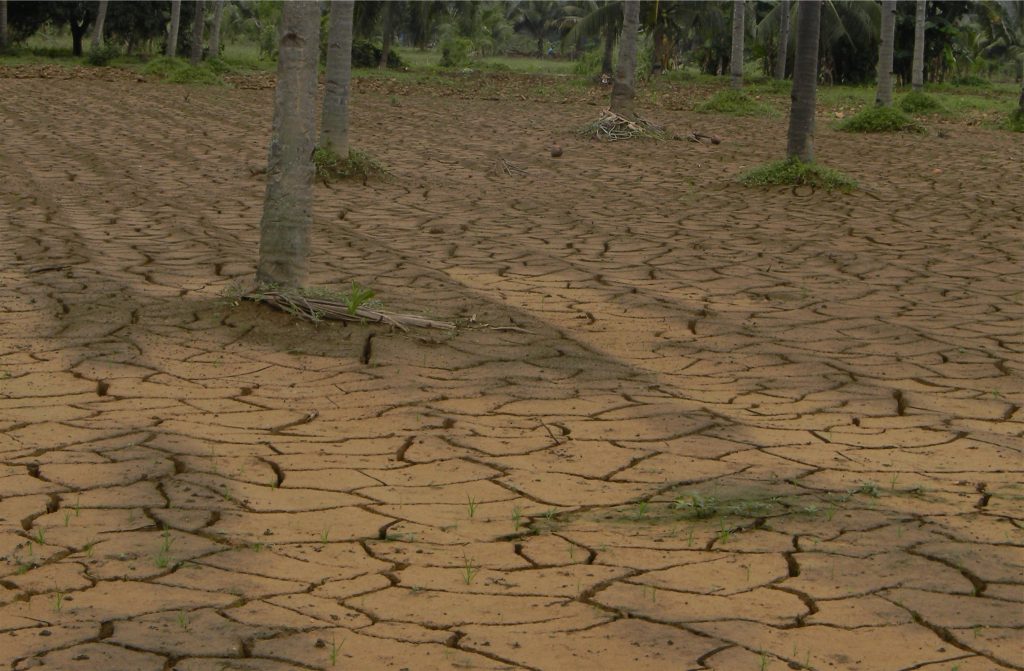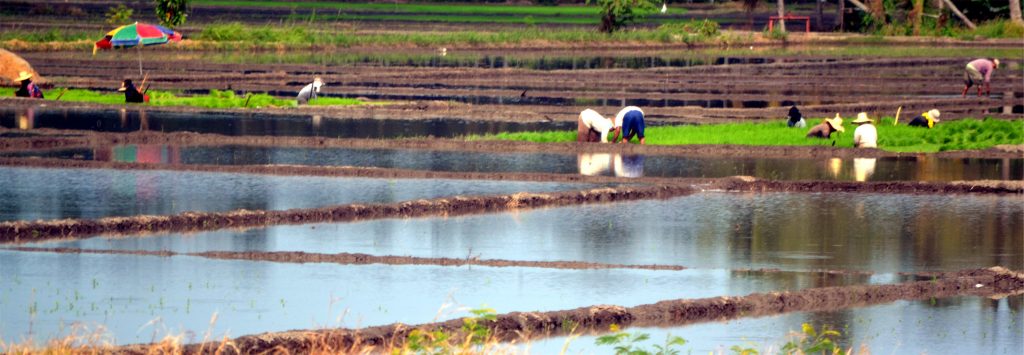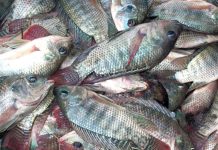El Niño occurs in the Pacific basin every two to nine years and usually starts during the Northern winter (December to February), according to the Philippine Atmospheric, Geophysical and Astronomical Services (PAGASA).
Late last year, the country’s weather bureau warned that the Philippines will again experience the “large scale oceanographic/meteorological phenomenon” by the first quarter of 2019.
In the past, the country’s El Niño Task Force – which the government launched in 1997 – has observed the following apparent signals of El Niño: delayed onset of the rainy season, early onset of the dry season, weak monsoon activity and less tropical cyclone occurrences.
All of these threatens farm production. Let’s take a closer look at history. The Policy Forum of the Center for Policy and Development Studies of the University of the Philippines at Los Baños (UPLB) recorded five El Niños between 1980 and 1995.
During the 1982-83 drought, palay yield plummeted by four percent. In 1986-87 events, yield went down by over one percent and during 1989-90 by less than one percent. In other episodes, there were no yield decline but yield increments slowed down.
“The figures may not firmly establish the negative relationship between El Niño and crop productivity,” the UPLB policy forum writes in its 1997 paper. It suggested that “contrary to the practice in legal proceedings, it is senseless to wait for sufficient evidence to incriminate the accused beyond reasonable doubt. Why wait for the probable damage before taking any action?”

In the Philippines, areas more vulnerable to El Niño phenomenon are classified as “high vulnerable,” “moderate vulnerable,” and “low vulnerable.”
“High vulnerable” areas, which are major producers of rice and corn, are Benguet, Ilocos Norte, Ilocos Sur, La Union, Pangasinan, Western Nueva Vizcaya, Cagayan Valley, Bataan, Bulacan, Nueva Ecija, Pampanga, Tarlac, Zambales, Batangas, Cavite, Laguna, Mindoro Occidental, North Palawan, Rizal, Romblon, Iloilo, Guimaras, Negros Occidental, Capiz, southern portion of Negros Oriental, Zamboanga City, Misamis Oriental, South Cotabato and General Santos City.
Those included in the “moderate vulnerable” areas are Ifugao, Kalinga-Apayao, Abra, Mountain Provinces, Batanes, Isabela, Quirino, Mindoro Oriental, Southern Palawan, Quezon, Masbate, Aklan, Antique, northern part of Negros Oriental, Siquijor, southern Cebu, Bohol, Samar, southern part of Zamboanga del Sur, western part of Zamboanga del Norte, central part of Bukidnon, Cagayan de Oro City, Davao Oriental, Davao del Sur, Sarangani, and Davao City.
“Low vulnerable” areas are those provinces and cities not listed in either area, according to the El Niño Task Force.

Forewarned is forearmed, so goes a familiar saying. This must be the reason why the Laguna-based Philippine Council for Agriculture, Aquatic and Natural Resources Research and Development (PCAARRD) has come up with a compendium of materials on the abnormal weather entitled, The Fiery Fury of El Niño.
Since El Niño is equated with drought in the Philippines, PCARRD advised farmers to plant drought-tolerant crops in time of El Niño. Examples of such crops are sorghum, sweet peppers, asparagus, ube, tugue, alugbati, winged beans, cowpea, cucumber, kadios, camote, cassava, peanut, ginger, mung beans, and black peppers. The following fruit trees are also drought-tolerant: cashew, mango, citrus, tamarind, avocado, jackfruit, guava, and grapes.
Watering, if necessary, must be done only during the cool part of the day – not on windy days. To keep the crops moist, cover them with mulch. Mulch is a layer of organic materials – usually – that is spread on the surface of the soil.
Where feasible, construct small water impounding reservoirs and other soil and water conservation measures (trench and contour canals, for instance) to catch and store water from rain or divert water from source.
The Philippines Recommends for Water-Saving Technologies for Rice and Other Crops, published by the Department of Science and Technology (DOST), said farmers can still vegetable crops even in times of drought and/or dry spells. “Vegetable cropping after rice usually coincides with the dry season,” it noted. “This crop may use residual soil moisture, supplemented by irrigation, underground supplies, or tank storage. Farmers may also take advantage of the drop-in river levels to cultivate riverbanks.”
In water-scarce areas, farmers can make the most efficient use of available water. “To do this, the growers decide how much and which crops to plant, or whether to plant at all,” the book said. “However, it is unwise to plant crops that cannot be properly irrigated because there are no drought-tolerant or -resistant vegetable varieties in the market.”
The DOST publication said that irrigation and water use in vegetable farming varies with the production system and ecoregion. “Vegetables are known as succulent products,” it explained. “In general, these consist of more than 90% water.”
As such, vegetables require good water supply for optimal productivity. “They are able to produce a crop during short periods of high moisture availability and respond well to controlled delivery of water, which enhances water use efficiency,” the book said. “On the contrary, drought conditions drastically reduce vegetable productivity.”
Here are more tips from the book on how to grow vegetable crops when water is scarce:
· Proper water management planning must consider all uses of water, from the source of irrigation water to plant water use. It is very important to differentiate between crop water requirements and irrigation or production water system requirements.
· Irrigation systems are rated with respect to application efficiency, which is the fraction of water that has been applied to the irrigation system and that is available for plant use. Applied water that is not available for plant use may have been lost from the crop root zone through evaporation.
· For good crop production, there is a need for an appropriate match between the soil physical properties controlling water movement and retention and the irrigation system. This affects the amount of water that can be stored in the soil after irrigation, the depth of wetting, wetting pattern, and aeration status.
· The characteristics of the irrigation system, crop needs, soil properties and atmospheric conditions must all be considered to properly schedule irrigations. Poor timing or insufficient water applications can result to crop stress and reduced yields.
· Various crop management practices such as mulching, using shelters, and planting in raised beds help conserve soil moisture; and prevent or reduce soil runoff, erosion, and degradation. The use of organic materials as mulch can help enhance soil fertility, structure, and other properties.
· Crop selection if important where water is expected to be in short supply. Plants with shallow root system will require more frequent irrigation to maintain a healthy growth rate. Shallow-rooted plants include lettuce, pechay, onions, and most other bulb/root/tuber crops, celery, and cabbage family plants. Deep-rooted crops include tomato, corn, sweet potato, and melons. Those with intermediate root depth are beans, peppers, squash, and cucumbers.

On the other hand, the Philippine Rice Research Institute (PhilRice) encourages farmers to plant drought-tolerant varieties. For irrigated lowland, for instance, farmers may consider planting several early-maturing varieties such as PSB Rc10 (Pagsanjan), NSIC Rc130 (Tubigan 3) and NSIC Rc152 (Tubigan 10). Pagsanjan matures in 106 days with a maximum yield of 7.5 tons per hectare. Tubigan 3 matures in 108 days with a maximum yield of 7.6 tons per hectare while Tubigan 10 matures in 109 days with a maximum yield of 8.7 tons per hectare.
For rainfed lowland, farmers may choose from NSIC Rc192 (Sahod Ulan 1), PSB Rc14 (Rio Grande), and PSB Rc68 (Sacobia). Sahod Ulan 1 matures in 106 days with a maximum yield of 5.5 tons per hectare. Rio Grande matures in 110 days with a maximum yield of 6.1 tons per hectare. Sacobia matures in 116 days with a maximum yield of 4.4 tons per hectare. These varieties are also known for their drought-tolerant properties preferable in areas where El Niño is expected to hit worst.
Drought-tolerant varieties for the uplands include PSB Rc80 (Pasig), PSB Rc9 (Apo), and NSIC Rc23 (Katihan 1). Pasig can yield up to 8.7 t/ha and matures in 112 days. Apo matures in 119 days with a maximum yield of 5.6 tons per hectare while Katihan 1 matures in 108 days with a maximum yield of 7.6 tons per hectare. (To be concluded)






